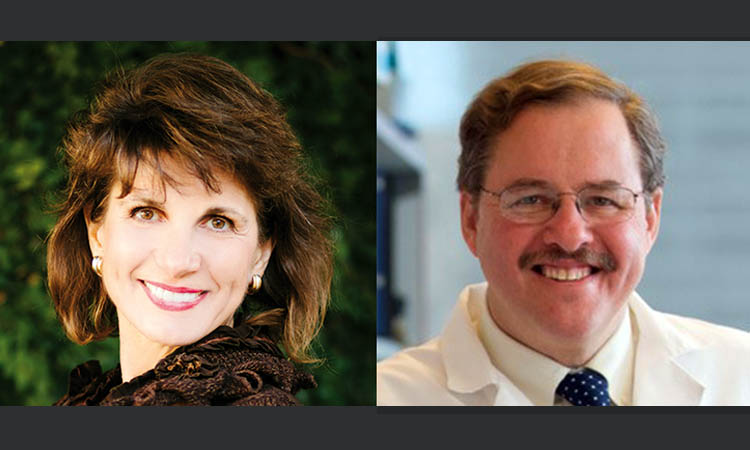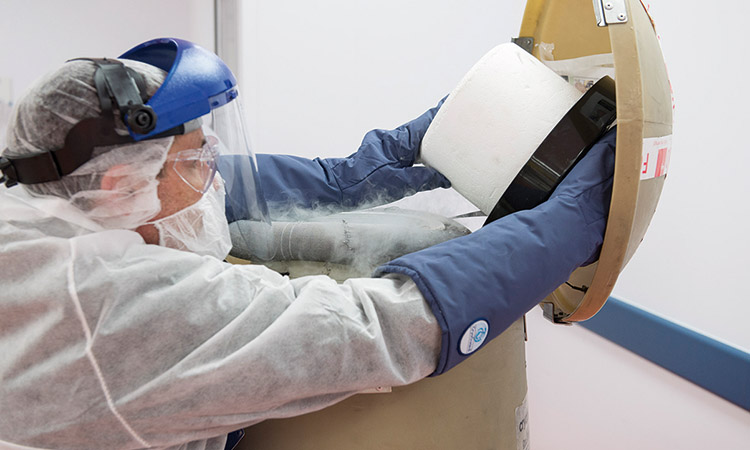Breakthrough for Pharma Industry & Patients - FDA Approved Gene Transfer Therapy

On 30 August, the US Food and Drug Administration (FDA) approved Novartis's Kymriah (tisagenlecleucel, CTL019), the first gene therapy for the treatment of pediatric and young-adult patients with relapsed and refractory B-cell acute lymphoblastic leukemia (ALL). Kymriah belongs to a class of drugs called chimeric antigen receptor (CAR) T-cell therapies, which constitute a form of immunotherapy that essentially takes control of the body's T-cells and directs them to attack tumors in patients with ALL. This is the first FDA-approved gene-transfer therapy among several CAR T-cell products that are in development.
Emily Whitehead and her family were in the right place at the right time to save her life. The Pennsylvania girl was five when she was diagnosed with ALL in 2010 and treated with extensive chemotherapy. Chemotherapy works for 85% of children with ALL; it didn’t work for Emily, however. By February 2012, when she was scheduled for a bone marrow transplant, she relapsed for a second time and no longer qualified for the procedure. Her doctors held no hope that she would survive and recommended that her family set up palliative care in their home.
"I couldn’t picture a day in my life without Emily and we could see her slipping away," said her father, Tom Whitehead. "But I always believed she would beat it and she always believed she would beat it."
The Whiteheads knew of a therapy being tested at the Children’s Hospital of Philadelphia (CHOP), which is located four hours from their home, and called to see if the clinical trial was open. "We said we were transferring to CHOP no matter what they had available," said Whitehead. "We were willing to try whatever they recommended."
In 2012, Emily became the first pediatric patient in the world to be treated with CTL019 (tisagenlecleucel), an experimental CAR T-cell therapy. She was treated by a team at the University of Pennsylvania (Penn) and Novartis Pharmaceuticals Corporation also entered into a global collaboration with Penn in 2012 to further research and develop CAR T-cell therapies.
When doctors administered the therapy, Emily’s temperature soared, and her blood pressure collapsed: she fell into a coma, and was on a ventilator for two weeks. She was suffering from cytokine release syndrome (CRS), likely due to a spike in interleukin-6, for which she was given an immunosuppressant monoclonal antibody (Mab), tocilizumab. She came out of the coma a few days later, on her seventh birthday.
Twenty-three days after receiving CAR T-cell therapy, Emily was cancer-free. She went home three months later, in June, and was back in school two months later. She has been cancer-free ever since.
Now, only a few weeks after the Oncologic Drugs Advisory Committee (ODAC) unanimously recommended that the FDA approve CTL019, the agency has done so, making Kymriah the first treatment based on gene transfer to be approved. At the same time, the FDA expanded the approval of Roche’s tocilizumab to treat the kind of cytokine storm that Emily Whitehead and many other patients experienced with CAR T-cell therapy. 6
How Do Car T-Cells Work?
"Cellular therapies are a complete disruption of the traditional way we think about treating disease, using the body’s own cells as the catalyst to tackle the most challenging illnesses," said Spencer Fisk, Vice President and Global Head of Cell and Gene Technical Development and Manufacturing at Novartis.
CTL019 is an adoptive cellular therapy, a living drug that uses a patient’s own T-cells to fight cancer. The process has three main steps: First, T-cells are filtered out of a patient’s blood by a process called leukapheresis and frozen. Second, the cells are shipped to a lab, where they are genetically modified by virus transfection so they express a chimeric antigen receptor that recognizes an antigen on tumor cells. In the case of CTL019—and many other CAR T-cell products in development—the antigen is the CD19 protein expressed on B-cells. Third, the modified CART-cells are cultured, then frozen* and shipped back to the medical center, where they are reinfused into the original patient. In the body, the CAR T-cells are activated when they bind to the CD19 antigen on the surface of tumor cells, release cytokines to kill the tumor cells, and proliferate after receiving an internal signal.
Hematological cancers are the easiest to target with CAR T-cells, which is why the first drug candidates are those for leukemias and lymphomas. ALL is the most common childhood cancer, making up a quarter of all pediatric cancer cases. There are 3,000 new cases of pediatric ALL in the United States every year, of which roughly 15% relapse after standard treatments.1
* Both inbound and outbound cells are frozen. The Novartis manufacturing process uses cryopreserved leukapheresis, which enables patients to be apheresed early in their course of therapy, giving physicians the flexibility to schedule apheresis at a time that is in the best interest of their patients, including times in advance of manufacturing. It also gives Novartis flexibility on when to start manufacturing CTL019 for the patient and allows for manufacturing and treatment of patients from around the world. In addition, cryopreservation ensures that CTL019 maintains its integrity from the time it leaves the manufacturing facility to the time it’s ready for infusion.
- 6Brennan, Z. “‘Historic Action’: FDA Approves First CAR-T Therapy.” 30 August 2017. Regulatory Affairs Professionals Society. http://raps.org/Regulatory-Focus/News/2017/08/30/28367/Historic-Action-FDA-Approves-First-CAR-T-Therapy/?utm_source=Email&utm_medium=Informz&utm_campaign=Informz%2DEmails
- 1US Food and Drug Administration. “Oncologic Drugs Advisory Committee Briefing Document.” 12 July 2017. https://www.fda.gov/downloads/AdvisoryCommittees/CommitteesMeetingMaterials/Drugs/OncologicDrugsAdvisoryCommittee/UCM566168.pdf

Novartis–Penn Collaboration
CTL019 was researched and developed at Penn, which entered into an exclusive research and licensing agreement with Novartis for CAR T-cell therapies in 2012. Testing of the therapy began that year.
The Novartis clinical trial enrolled 88 patients and 68 patients were infused with CTL019. They were treated at 25 global medical centers in 11 countries, including the United States, Canada, Japan, Australia, and seven in the European Union. After one treatment, 83% of patients in the phase 2 clinical trial went into complete remission, with a survival rate at one year of 79%.2
Despite the treatment’s success, CAR constructs and CAR T-cells are difficult to make, can have significant side effects and toxicities, are challenging to scale, and are expensive. Even when they do work there is the concern that patients will relapse as their cells become resistant or evade the therapy.
Safety Concerns
As with any new medicine, safety is a concern. Juno Therapeutics’s CAR-T product, JCAR015, was in phase 2 clinical trials for adults with relapsed or refractory ALL when five patient deaths in 2016 put the study on hold. The company has since announced it is ceasing development of the therapy.3
According to Stephan Grupp, MD, PhD, the baseline against which the safety and efficacy of CTL019 is measured is the mortality from the alternative, which is a bone marrow transplant. "A small number of ALL patients are eligible for a bone marrow transplant, for which the mortality rate in the United States is between 10% and 30%. The treatment-related mortality for cell therapy is much lower, but it’s not zero." Dr. Grupp, Director of the Cancer Immunotherapy Program and Director of Translational Research for the Center for Childhood Cancer Research at CHOP, is on the Penn team that led the development of CTL019 and treated Emily Whitehead.
CAR T-cell therapies can lead to an overstimulation of the immune system. Of patients in the Novartis clinical trial, 47% developed moderate to severe CRS, though there were no deaths due to refractory CRS. 2 Following their experience treating the first patient in the trial, Dr. Grupp’s team developed a treatment protocol—which included the use of tocilizumab—for all the medical centers taking part in the study.
"The doctors performing this treatment are bone marrow transplant specialists, so we’re starting from a high baseline of knowledge and experience," said Dr. Grupp. "We’ve rolled this out to multiple centers around the world and have done that with an extraordinary degree of safety."
Another side effect of the treatment is B-cell aplasia, which occurs because CTL019 recognizes both healthy and cancerous B-cells, all of which express the CD19 antigen. This leaves patients without antibodies and thus vulnerable to infections. The aplasia lasts as long as the modified T-cells are in the patient’s body and requires regular infusions of immunoglobulin G, such as the subcutaneous immune globulin product Hizentra.
Manufacturing Challenges
Dr. Grupp compares the state of manufacturing CAR T-cell products to where the industry was when it first used cultured cells to make biologics. "It was hard to start, but the industry now knows how to make biologics amazingly well and how to do it at scale," Dr. Grupp said. "Everybody is learning how to manufacture CARs at scale right now."
"The challenges that come with manufacturing CAR-T therapies lie at the heart of their novelty," Spencer Fisk agreed. "One critical challenge area is in scalability for immunotherapy products."
The industry seems to be meeting the challenge. The Novartis facility in Morris Plains, New Jersey, has already manufactured CTL019 for more than 250 patients in global clinical trials. Novartis expects that the time from manufacture start to product release (including quality assessments) will be about 22 days. Kite Pharma, another company with CAR T-cell products in clinical trials, has comparable delivery times and estimates the capacity of its manufacturing plant at as many as 5,000 doses per year.4
"The experience gained at the Novartis facility will be a foundation for commercial manufacturing of CAR-T therapies," Fisk said. "We continue to make investments in our unique CAR-T manufacturing facility to ensure we can meet the needs of patients being treated with these therapies."
Dr. Grupp is optimistic about what the pharmaceutical industry can accomplish. "It’s amazing to see the handoff from academic good manufacturing practice (GMP) to commercial GMP and to watch how Novartis can pull off worldwide logistics for something as complicated as a cell therapy."
While the techniques for manufacturing biologics are well developed, adoptive cell therapies have unique technical, regulatory, and logistical challenges.
"Though the same quality by design (QbD) principles that apply to biologics are used for cell-based therapy products, there are significant challenges that require new approaches to define and ‘design quality in’ during the development of such products. The process for autologous cell-based therapy starts with patients and doctors at medical centers as suppliers of the starting living biological material that will be used in the manufacturing process. The attributes selected for control of identity, purity, potency, and safety during development need to be defined specifically for each product," said Mihaela Simianu, PhD, Director of Regulatory Compliance at Pharmatech Associates. "For biologics, the active ingredient is a nonliving biological modality isolated or produced at large scale using biotechnological methods. In this case, living cells are genetically engineered and used to express at scale the desired active ingredient. With cellular therapy, the starting active ingredient and the product are living cells."
The complexities go beyond safety and manufacturing to include the need to maintain stability and chain of identity for product shipped from a medical center to the Novartis facility and back again.
"Cell activity and other functional attributes are sensitive to time and conditions used during transit across locations and points in the process; expedited and controlled transit of these living cells is a critical success factor," said Dr. Simianu. "For example, one may need to ensure that cells arrive at the manufacturing site within an 18- to 48-hour time frame. Specific containers, data loggers to keep track of samples, chain of custody, and carriers that can do this without a flaw are needed. All the details impacting cell-material stability during the closed-loop supply chain must built into the development of the product; it can’t be an afterthought."
- 2 a b Novartis. “Novartis Pivotal CTL019 6-Month Follow-Up Data Show Durable Remission Rates in Children, young adults with R/R B-Cell ALL.” Press release, 23 June 2017. https://www.novartis.com/news/media-releases/novartis-pivotal-ctl019-6-month-follow-data-showdurable-remission-rates
- 3Business Wire. “Juno Therapeutics Reports Fourth Quarter and 2016 Financial Results.” 1 March 2017. https://finance.yahoo.com/news/juno-therapeutics-reports-fourthquarter-210500393.html
- 4Palmer, E. “Manufacturing Costs Loom Large for Personalized CAR-T Cancer Meds and Their Need for Speed.” FiercePharma, 9 June 2017. http://www.fiercepharma.com/pharma/manufacturing-costs-loom-large-as-car-t-cancer-meds-march-toward-approval

leukapheresis at a time that they determine.
Standardizing Cellular Therapies
One of the stumbling blocks to regulating cellular therapy, particularly one using autologous medicines unique for each patient, is how to standardize product and measure efficacy between and within manufacturing facilities.
"What we can do in an academic manufacturing lab might not be possible in a pharma setting," said Dr. Grupp. "They have to apply additional rigorous regulatory control processes for which there is not yet a good regulatory mechanism."
"The characterization of living cells requires different methodologies than we use routinely for a biologic active pharmaceutical ingredient," said Dr. Simianu. "You need to search and adapt techniques used by cytology, cytogenetics, cellular biology, histology, virology—combine different medical research techniques to select the best tools to analyze those molecules. It’s not that we’re using something completely new, it’s just new to the biopharmaceutical sector."
So how will companies standardize products and how will regulators measure and compare products?
"We start with a target product profile," said Dr. Simianu. "What is it for? What is it made of? What do we need the activity to be? How will it be delivered? How stable does it need to be to reach and treat the patient? Based on the target product profile, you decide what are the critical quality attributes (CQA) that the product needs to have. From the CQAs you define the way you control these attributes and the control strategy: those are the same QbD elements that we apply successfully today to biologics.
"In transferring from the lab to a commercial site, or from site to site, there are challenges in understanding what is critical and what is important to maintain the CQAs, then define these attributes well from the beginning. You have a different facility, different equipment, environment, and staff. Everything starts with defining what’s important, what process to use, and how to do different parts of the process."
Take potency assays as an example. "There is no proven assay for a cell-therapy product that predicts whether it will work in a patient," Dr. Grupp said. "Yet the FDA requires you to have one." The danger, he says, is that ma potency assay will get invented—even one with great parameters—but they won’t know if it correlates with the desired outcome, which is whether the therapy actually works.
Fisk is confident that Novartis can overcome these hurdles. "For each patient treated with CTL019 during a clinical trial, we performed comparability and equivalency testing to demonstrate that each batch was standardized. We have a highly reproducible manufacturing process with demonstrated manufacturing success. Novartis uses well-established standards to maintain a rigorous chain of identity from leukapheresis at an approved site, through manufacturing, to patient infusion. These standards seamlessly integrate with a Novartis quality system dedicated to managing chain of identity of patient material and final product."
Fisk points out that the Novartis facility in Morris Plains will be the manufacturing location for commercial product. "Furthermore, Novartis has successfully transferred and demonstrated equivalency of the CTL019 process to our partner in Europe, demonstrating the robust and reproducible process we have developed."
Dr. Grupp recommends that a lot more patients be treated before specific manufacturing rules are applied. "The field is being created on the fly. The danger is that once a rule is established it will be difficult to change. The companies that are doing it first—Novartis, Juno, Kite, all of which have single manufacturing streams—are going to define the regulatory context and they’d better be certain about the manufacturing rules before they suggest them to regulators."
"Because this characterization is so important to the success of the product, there is a lot of investment during the discovery phase to establish this methodology," said Simianu. "This is a flip from biologics, where we know what we’re looking for and we have standardized techniques. In cell therapy, you have to invest a lot in defining how you will characterize the product. There may be some general techniques, but there aren’t as many tools that are nonproprietary. The goal is to establish this early on so that, if you make changes to the way you produce or test the cells and there’s impact on comparability, you don’t have to start over. Significant changes in characterization will require comparability protocols. When a company enters phase 1 they need to be readier with these tests than they usually are for biologics."
"Global health authorities have expertise and standards in place that were established specifically to evaluate clinical research and manufacturing of CAR T-cell therapies," Fisk said. "We saw this process in action for the first time in July 2017, when ODAC unanimously recommended approval of CTL019. Through the ODAC process, the committee was able to review and hear from experts in the field of CAR-T science and product development."
The Cost of a Cure
Given that autologous therapies are unique for each patient, the global supply chain, and manufacturing challenges, this technology will be expensive. Novartis indicated that the one-time treatment will cost $475,000. 6
To put this estimated price in perspective, the National Institute for Health and Care Excellence, which provides guidance and advice for the National Health Service in the United Kingdom, pegged the benefit of CART-cell therapies as a curative for ALL at $650,000. 5 Most children with leukemia respond well to standard therapies such as a bone marrow transplants, which cost roughly $500,000.
Novartis announced that it has entered into a collaboration with the US Centers for Medicare and Medicaid Services to use an outcomes-based approach that permits payment only if patients respond to Kymriah within the first month of treatment. 7
Brad Loncar, CEO of Loncar Investments, a company that focuses on cancer immunotherapy, sees this as a good-news story for the pharmaceutical industry after a couple years of negative press. "This shows the pharmaceutical industry at its best and shines a light on why this industry exists. The results we’re seeing in these blood cancers are extraordinary."
It’s also good news for investment in the industry. "Any time a new technology makes it across the finish line at the FDA it’s meaningful," said Loncar. "People are skeptical when things are developmental and the regulatory path is not clear. But when a treatment moves from the theoretical to the real, a lot of investors take note."
Novartis shares on the New York Stock Exchange were up almost 2% the next day.
Future of Cellular Therapies
Novartis plans to file an application for market authorization with the European Medicines Agency (EMA) later this year. 2 Kite Pharma filed a Marketing Authorization Application with the EMA for axicabtagene ciloleucel in July 2017, the first CAR T-cell application in Europe. Dr. Stephan Grupp and his Penn team will be instrumental in continuing to provide training to designated medical centers. Beyond that is the need to improve the efficiency of the manufacturing process.
"What I’m looking forward to from our pharma colleagues is significant innovations in manufacturing cells so it can be less expensive and time-consuming," Dr. Grupp said. "That’s something that the pharma folks should be awesome at and is super important."
There is a push to develop CAR constructs that target antigens other than CD19 and to apply them to solid tumors, which, other than glioblastoma, have been refractory to immunotherapy.
"Pediatric patients with relapsed solid tumors have very bad outcomes and there isn’t anything out there for them," said Dr. Grupp. "But we have to overcome the solid tumor problem, which is significant. That’s the work of the next five years."
The Emily Whitehead Foundation
The mandate of the Emily Whitehead Foundation (EWF) is to help fund immunotherapy research and build awareness.
"Everything about our normal life before cancer has changed," said Tom Whitehead, who established the foundation with Emily and his wife Kari. "Since Emily’s treatment got worldwide coverage we get offers to travel and talk about our experience to help inspire the workers and to raise money for cancer research."
The EWF will hold a "Believe Ball" in King of Prussia, Pennsylvania, in October, to which all the other children who have received the Novartis CAR-T therapy are invited, along with their doctors, the families of children in other T-cell trials, and celebrities.
One of those doctors is Stephan Grupp, who admits that pediatrics is as much a calling as a career choice. He gets the patients for whom standard therapies don’t work. "It can be very challenging to deal with patients with potentially fatal diseases and families who are desperate to help their kids, but I feel that I’m engaged in something that really matters.
"My patients are what inspire me. The great thing about being a pediatrician is that you are dealing with kids. Seeing a child who is critically ill get better and watching them get back to their lives is the most inspirational thing I have done in the last 25 years."
"Stephan and his team are amazing," Whitehead said. "One of the things my wife and I learned from our forced education in oncology is that these doctors are as great people as they are great scientists and doctors."
He has a message for all the doctors, engineers, and scientists working in this field to create lifesaving medicines.
"Each time you have a success, it changes a family dynamic. Our whole family would never have been the same if Emily hadn’t had a good outcome. You don’t realize the importance of all this work, even the paperwork, that it takes to get to the point you can treat somebody. Each day you make a difference and you can save a life. It took everyone getting it just right to keep Emily alive. "This treatment kept our family whole."
- 6
- 5Crabb, N., and A. Stevens. “Exploring the Assessment and Appraisal of Regenerative Medicines and Cell Therapy Products.” Centre for Health Technology Evaluation, National Institute for Health and Care Excellence. March 2016. https://www.nice.org.uk/media/default/about/what-we-do/science policy and research/regenerative-medicine-studymarch-2016.pdf
- 7Novartis Pharmaceuticals. “Novartis Receives First Ever FDA Approval for a CAR-T Cell Therapy, Kymriah™ (CTL019), for Children and Young Adults with B-Cell ALL That Is Refractory or Has Relapsed at Least Twice.” 30 August 2017. Novartis website. Press release. https://www.novartis.com/news/media-releases/novartis-receives-first-ever-fda-approvalcar-t-cell-therapy-kymriahtm-ctl019
- 2


